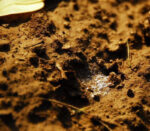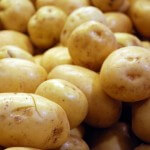Hoeing: A Garden Essential
In his 2001 track ‘Ho’ from the album ‘Back for the first time,’ rapper Ludacris declares, “Hoes get the job done.” While I may not share his affinity for rap music, I wholeheartedly endorse his praise for the humble hoe.
During the early months of winter, I tackled a quarter of my sizeable plot on Gun Hill Allotments, New Arley. The harsh winter weather – including frosts, rain, snow, and wind – worked its magic on the soil, breaking down the large clumps into a workable tilth. However, I couldn’t complete the task before the worst of the winter set in, leaving me feeling like I had missed out on the benefits of winter’s natural tilling process.
Now that the soil is beginning to ‘flower’ (reach its prime workability), I find that digging only leaves it heavy and difficult to plant. I anticipated this and decided to adopt a ‘no-dig’ approach for the rest of my plot. Instead, I’ve been leisurely hoeing the ground since February, and the results have been remarkable.
Firstly, the soil is now beautifully workable, providing an ideal tilth for sowing and planting. Secondly, I’ve gained mastery over the horde of annual and perennial weeds that had taken over my plot during the latter part of last year. Not a single weed leaf remains in sight. While they may inevitably resurface, I now have control over their presence. Additionally, the plants I’ve hoed have decomposed into the soil, releasing nutrients that they had previously appropriated without my permission. (I don’t subscribe to the concept of true ownership; I prefer to consider myself a good steward of the earth’s bounty.)
As an alternative to digging, hoeing offers several advantages. It’s less strenuous, causing minimal damage to the soil structure. This, in turn, benefits the many beneficial creatures that reside in the soil, such as worms and nematodes, which play a crucial role in nutrient cycling and pest control. Hoeing also helps to mitigate carbon dioxide emissions, which is a welcome environmental bonus.
Of course, there are some drawbacks to consider. For instance, slug populations may experience a slight increase due to the reduced disturbance caused by single or double digging.
Ultimately, the choice between digging and hoeing depends on various factors. If your drainage is poor, double-dig and irrigate accordingly. However, if drainage is adequate, try hoeing and see how you fare. Also, if you have densely packed weed growth or grass, you may have no choice but to dig it over.
So far this year, my allotment looks spectacular, and I only spend about 10 minutes a day hoeing my 25 x 32-foot plot. I consider this to be light work indeed.
I began this article by commending Ludacris’s advocacy for hoes, but I feel it’s important to clarify that the word ‘hoe’ is spelt with an ‘e’ at the end. (Please note: I’ve included an image of a hoe to enhance the content.)



